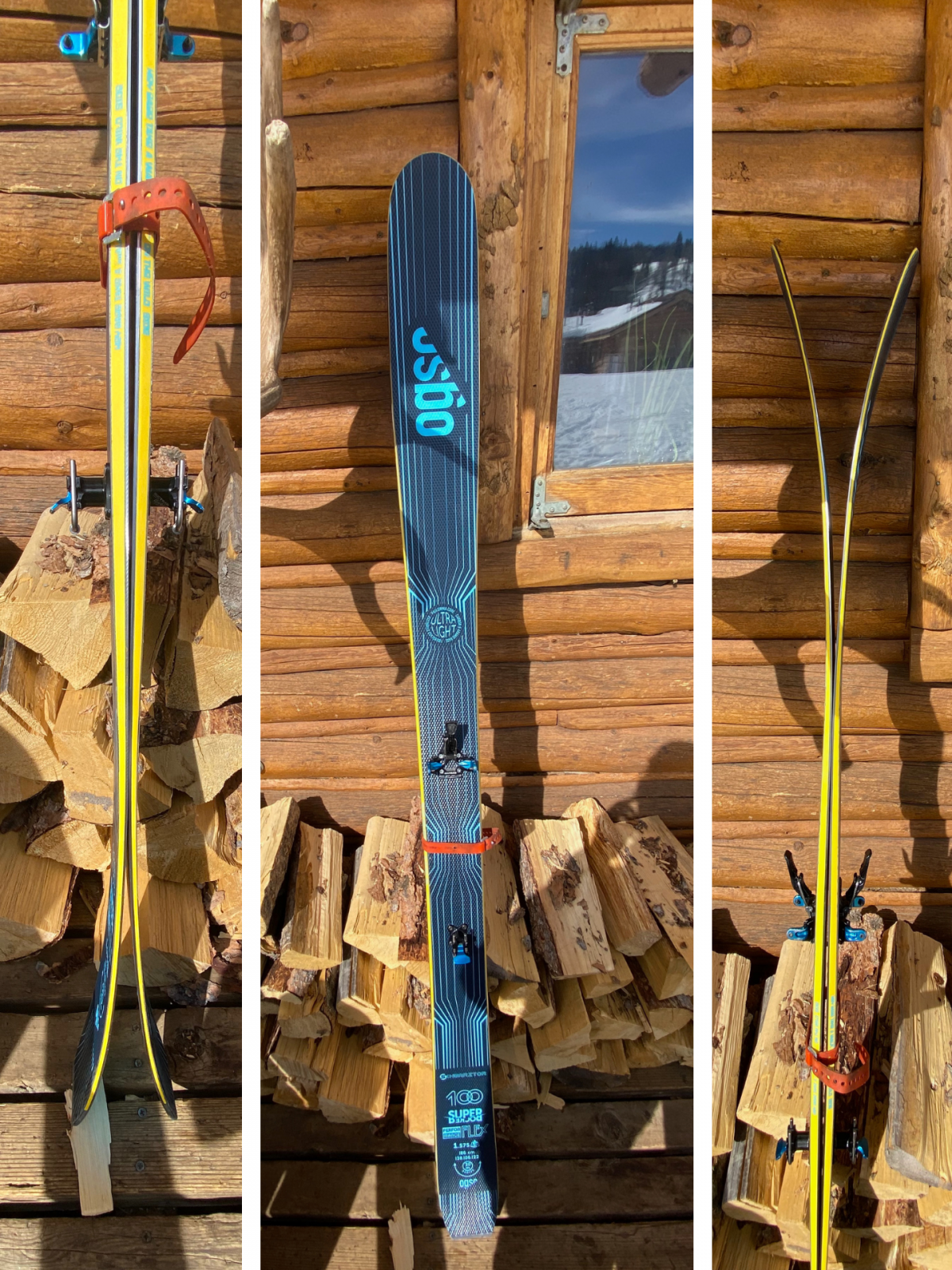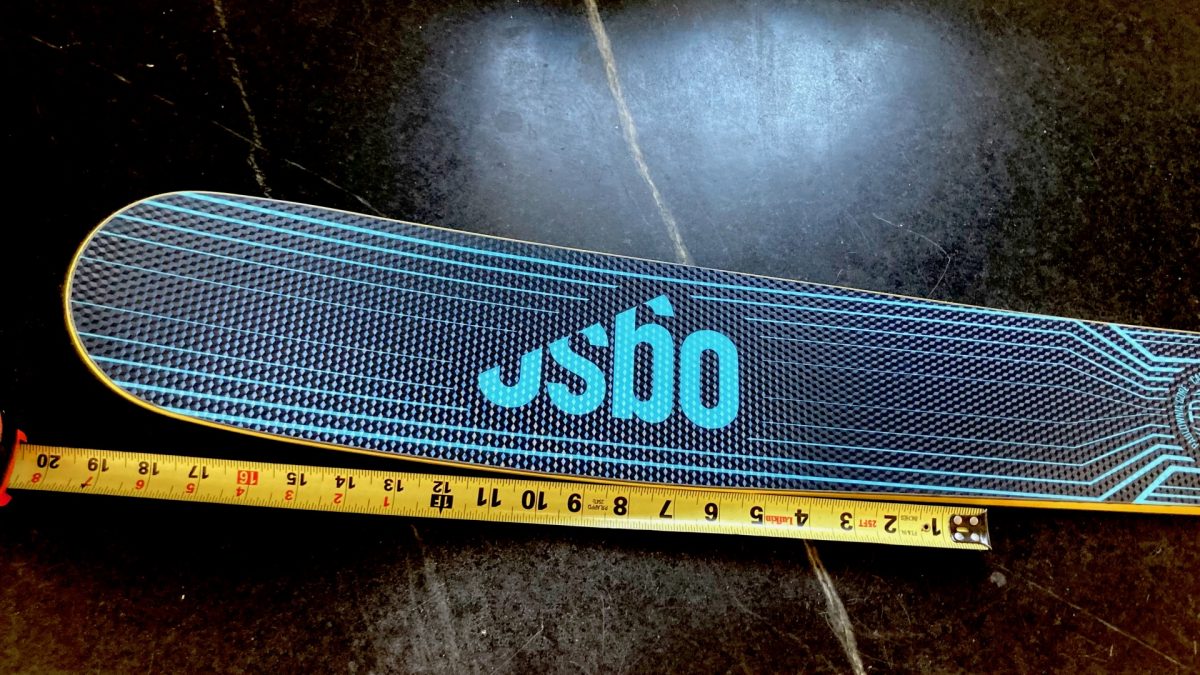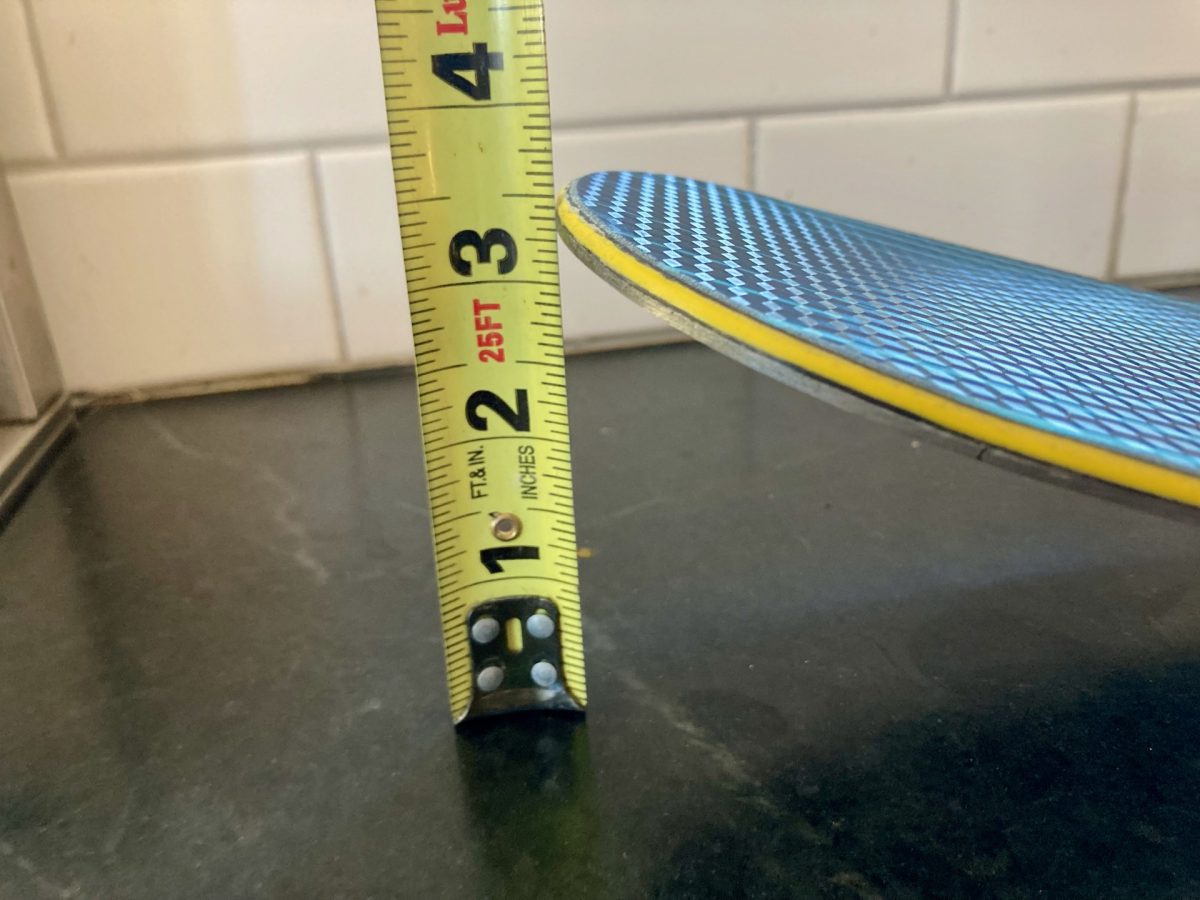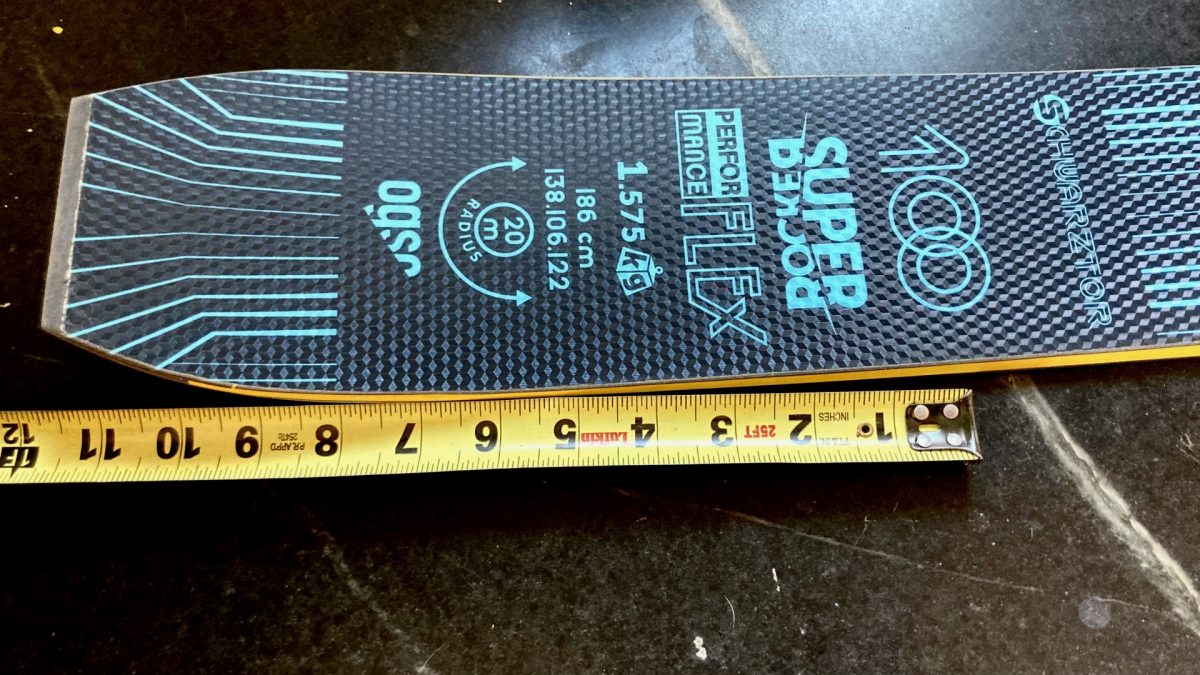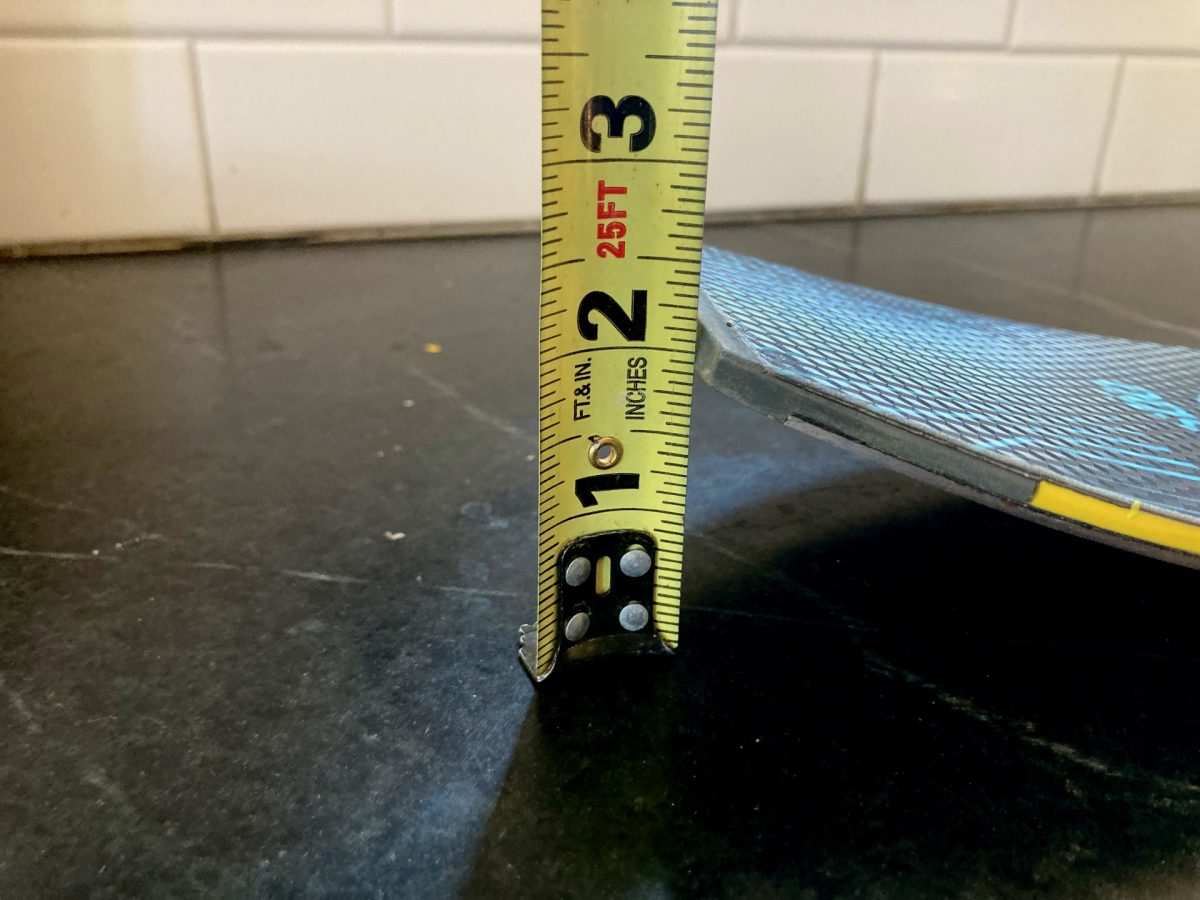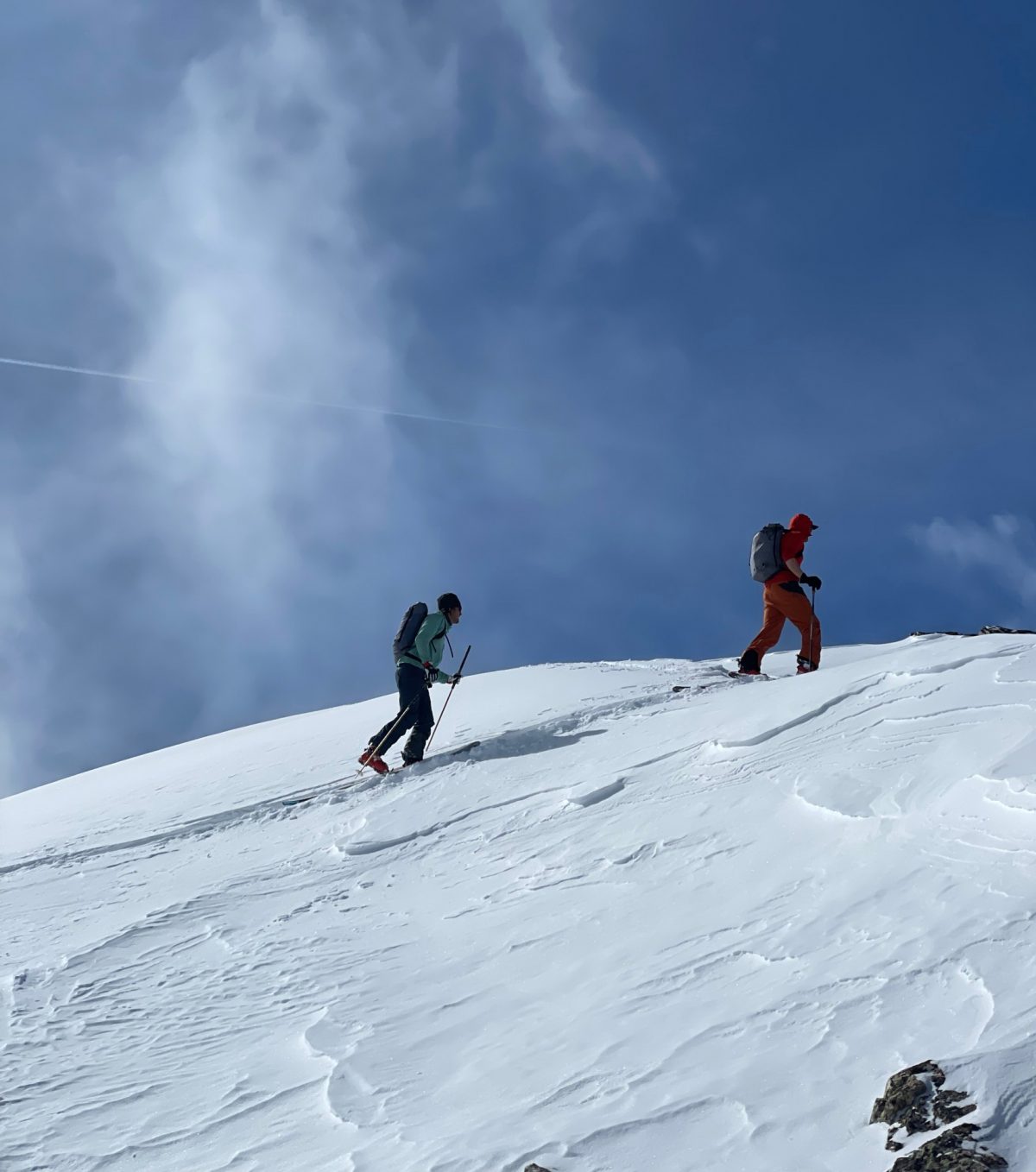
The OGSO Schwarztor 100 SR UL, a modern shape for a good time: The 1602g of ski underfoot means stay in shape, stay stoked, and plop a lightweight binding on this board.
Be open to the possibilities and you might be surprised. That’s the case with the OGSO Schwarztor 100 SR UL: Behold the rocker, longer turn radius, and begin to smile.
Before receiving these skis, I had never heard of the brand OGSO. A little research turned up a new European brand started in 2015. At first glance, they have an overwhelming array of lines and models, but a few minutes of reading simplified things quite a bit. They have two basic profiles; SR for super rocker and NEO, a more traditional camber shape. They make each ski in either a UL (ultralight) or ML (medium light) layup and have 10mm width increments from 70 or 80mm to 110mm for each shape/layup. Adding slightly to the confusion, the Schwarztor 100 in a 186cm (the ski I tested) is 106mm underfoot – as OGSO scales the width with length.
Like another popular French brand, every OGSO model has a phrase on the sidewall underfoot – the lyrics “hey babe, take a walk on the wild side,” in this case.
The Schwarztor 100 SR UL (Super Rocker, Ultra Light) stands out among the crowd. Starting with the topsheets, the Tron style graphics and no less than seven different fonts catch the eye; but turning the skis for a profile view is where they stand out. Comically rockered is the first thought that came to mind when I first laid eyes on the Schwarztor’s profile. I had never seen anything quite like it. Frankly, I was quite skeptical at first glance. Despite my skepticism, I mounted them with a pair of my favorite Ski Trab Gara Titan bindings for a relatively lightweight package – at 1720g/ski.
Schwarztor 100 SR UL Metrics
Available lengths (cm): 162, 170, 178, 186 (tested), 194
Dimensions (mm): 138-106-122 (186cm)
Radius (m): 20 (186cm)
Mass (g): Claimed— 1575g Measured at 1602g/ski
Mount Position (cm from center): -11.9 cm
Construction Highlights: Paulownia Core, Carbon, basalt, fiberglass, and aramid layers, “Carbon X-band” in front of bindings for torsional rigidity. mounting area reinforced with “phenolic resins.”
Shape: Heavily tapered, long-ish turn radius, squared-off tail.
Profile: Long, aggressive tip and tail rocker lines, very upturned tail, short cambered section underfoot.
Binding & Boot Pairing Tested: Mounted with Ski Trab Gara Titan. Tested with Technica Zero G Tour Pro (323mm bsl).
Similar Models: DPS Pagoda Tour 112RP, 4FRNT Raven
MSRP: $800
Schwarztor 100 SR UL Design Highlights
Upon first glance, it was hard for me not to associate these skis with a DPS 112RP or similar skis that elicit the descriptor of “water skis” or “banana boats.” While there are certainly similarities, there are distinct differences, and they will suit a pretty different skiing style than their DPS relatives. Starting with the similarities, the profile between the two is quite similar, with DPS calling the 112RP 45% rocker, 55% effective edge – my math gives me almost identical numbers for the Schwarztor (55cm Front rocker + 30cm tail rocker / 186cm total length = 45.6% rocker). They have about 7mm of camber underfoot, which is quite significant, although I’m not sure how that compares to DPS.
Both skis are heavily tapered, with the widest point of the Schwarztor ~30cm from the tip. Mount point is quite rearward at -11.9cm, but not as far back as the -14cm on the DPS. A few key differences; first, the Schwarztor has a 20m turn radius in a 186cm while the DPS has a 15m radius; 5 m makes a huge difference in turn shape! The generous turn radius should make the Schwarztor feel more stable at high speed at the expense of some agility and ease of turn initiation. Second, considering the stiffness profile, the Schwarztor is quite thin and soft in the tips but gets much stiffer and torsionally rigid in front of the binding at the location of the “Carbon X-Band.” That stiffness/rigidity continues underfoot before softening some in the tail.
Overall, it’s not a super stiff ski, but it is no wet noodle either. The stiffness underfoot should help a lot in firm conditions that could otherwise be pretty awful on a ski this rockered. In sum, I predicted this design set would come together to make a fun, easy-going ski with decent stability at speed, excellent float for its width, and poor performance on firm snow.
Here are a few other essential design notes. The overall build quality of the skis felt decent but somewhat lacking in the up-close details. There are a few gaps in the edge near the tip that seem like potential tear-out points, a bit of unevenness in the tail protectors, and a few spots in the carbon layers that look less saturated with epoxy than the surrounding areas. None of these areas caused any issues during the testing but feel worth noting as potential problem areas.
The binding area is reinforced with phenolic resin-impregnated sheets that are supposedly formulated for better screw retention. I drilled with a 3.9mm bit and did not tap the holes but used G-Flex epoxy to ensure good retention. The tails are not notched for skin tail clips. But the squared-off shape holds both Kohla and Pomoca climbing skin clips well and would be easy to notch with a file or Dremel for added security. The tips are wide and squared off, which held a standard Pomoca/Kohla wire loop well, but may require a larger size with the new BD clips or adjustment with the old cable style.
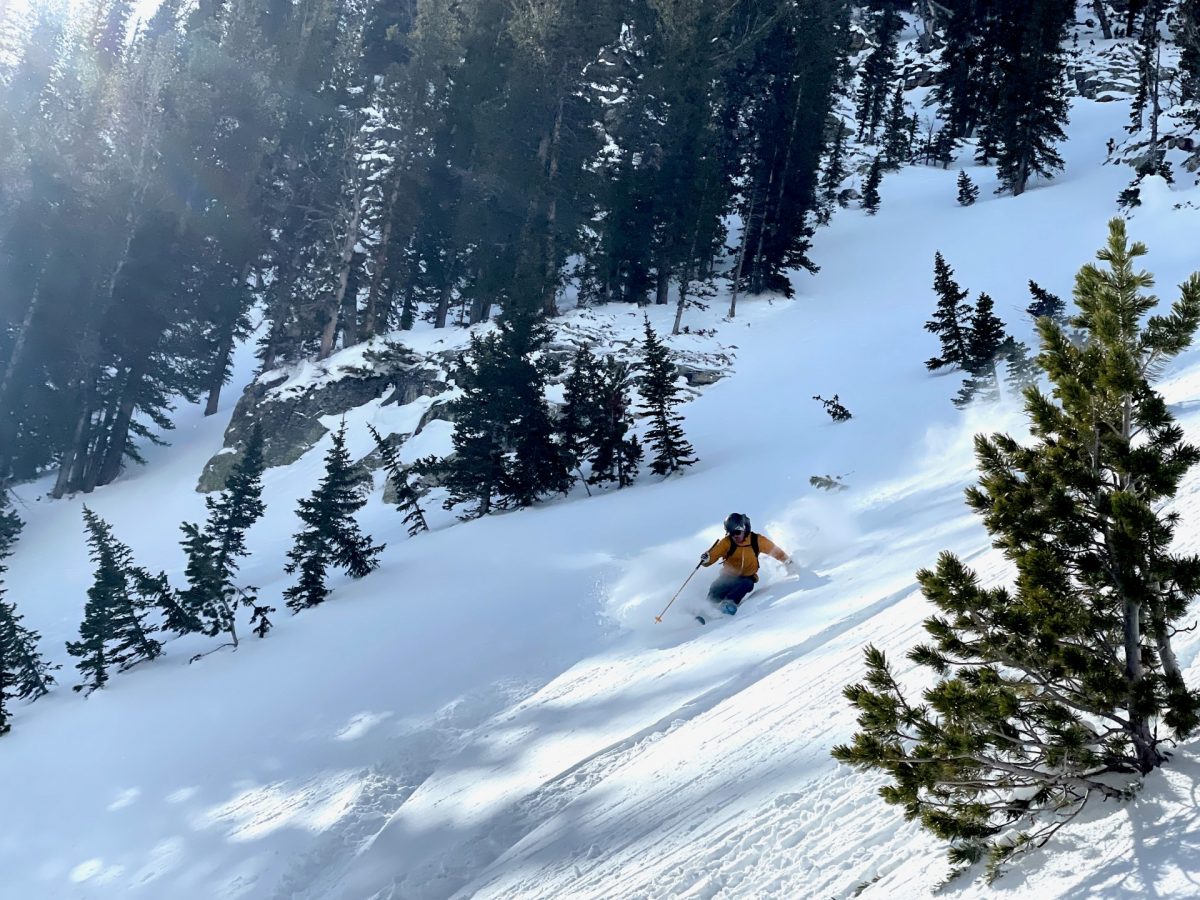
The author and his rockered OGSO Schwarztor 100 SR ULs enjoying the float: “From the first few turns, the skis felt confident and stable.”
Field Testing the Schwarztor 100 SR UL
Powder/Soft snow
It isn’t hard to predict that the Schwarztor would excel in soft snow and powder. I’m not sure I would have guessed just how fun they were in these conditions. My first day out was in settled, boot-top shin-deep powder that was fast and forgiving. From the first few turns, the skis felt confident and stable. It often takes me a lap or two to dial in the balance point and turn initiation for a new set of skis, but the Schwarztors felt intuitive and stable from the first few turns onward. Unlike some of the fully rockered skis I’ve tried over the years, where you have to find, and micro adjust the balance point just right to rip, the Schwarztor felt very forgiving to a wide range of stances and balance points. They excelled most with a fairly forward stance where they felt nimble and hard-charging. They gave me lots of confidence to hop off of rocks and small rollers, knowing that they were forgiving to some inevitable backseat landings, and I could quickly recover whenever this happened.
The turn shape and feel are very different from other skis I’ve tried in this width class. There is almost no “locked in” feeling in softer snow; instead, a somewhat loose, surfy turn that, in tandem with the stable fore-aft balance, made for a unique but enjoyable feeling of being loose but still in control. Maybe this is what people mean when they talk about the “slarve?”
Crud/Tracked/Variable snow
I had pretty high expectations for the Schwarztor in variable conditions. For better or worse, there was a lot of opportunity for testing in various forms of “bad” snow this season. I found a pretty mixed bag that was impressive at best and unpredictable at worst.
I’ve concluded that speed was the main determining factor in variable snow performance. I was impressed early on when I came into a slight aspect shift and the associated zipper crust quite quickly one day. The Schwarztors handled this crust well, and I could keep skiing hard and punch through without getting hooked or caught up. The same went for hitting old tracks with speed or getting through willows and tight sections on out-tracks; they handled all of it pretty darn well. On the flip side, things got a little dicier at low speeds.
I think a more upright stance also plays a big role here. I had a few instances of unpredictable performance when encountering variable snow while making shorter radius, slower “guide turns.” One instance was transitioning from chalky wind board to breakable coming off an alpine ridgeline in a low-angle bowl. The second was in some late spring “hot pow,” where a zipper crust was developing in the shady spots by mid-morning. In both instances, I came into a variable zone expecting the change but got totally thrown off by the skis’ reaction. In both cases, my outside ski dove under and didn’t initiate into the next turn – leading to one near crash and one fairly spectacular face plant.
On the second day in question, one of my companions was on the DPS 112RP. They had a notably easier time navigating these small breakable sections, which makes me think that this could be a result of the longer turning radius being less forgiving when the ski gets locked into a crust.
Firm Snow/Couloirs
Frankly, I was nervous about getting into anything too serious or firm on the Schwarztors. The soft, rockered tips and loose tails don’t inspire much confidence in the idea of hop turning down a steep, firm slope, and the 186cm length is quite a bit longer than my usual couloir/mountaineering skis. For the sake of the review, and some curiosity (how bad could it be?) I took them out for an adventurous day in the alpine this April.
Our adventure began as an enjoyable couloir run but soon turned into a few hundred feet of more technical skiing, sidestepping, rappelling, and high-angle bushwacking/tree hopping. The 186cm waterskis weren’t the ideal tool for the job, but I made due. Aside from the inherent issues with navigating a ~170cm passage with 186cm skis, the Schwarztors were stable, and the edges held well through some very firm steep snow/ice. They were a handful to jump turn in tight spots, but the longer radius and running edge held confidently in more open terrain.
2D Snow/Corn
I skied the Schwarztors quite a bit this spring as they often felt like the best choice in my quiver for a lightish, forgiving, and stable ski in corn and mixed spring conditions. I tend to think that most skis are pretty fun in perfect corn; the big differentiator is how a ski handles quick changes in surface conditions, especially at speed. The Schwarztors felt stable doing large radius, fast turns in perfect corn. Hitting firmer patches, I often experienced a fair bit of tail wash-out – no surprise given the rocker profile in the tail. Other than coming to expect that, they handled sloppy transitions and wet slide debris quite well, perhaps partly to the length and the rockered tip floating through some chunky snow without bucking me like I’ve come to expect from my trusty old Zero G 105s. All in all, the Schwarztors turned into my go-to spring skis when I was out for more mellow outings and/or expecting corn.
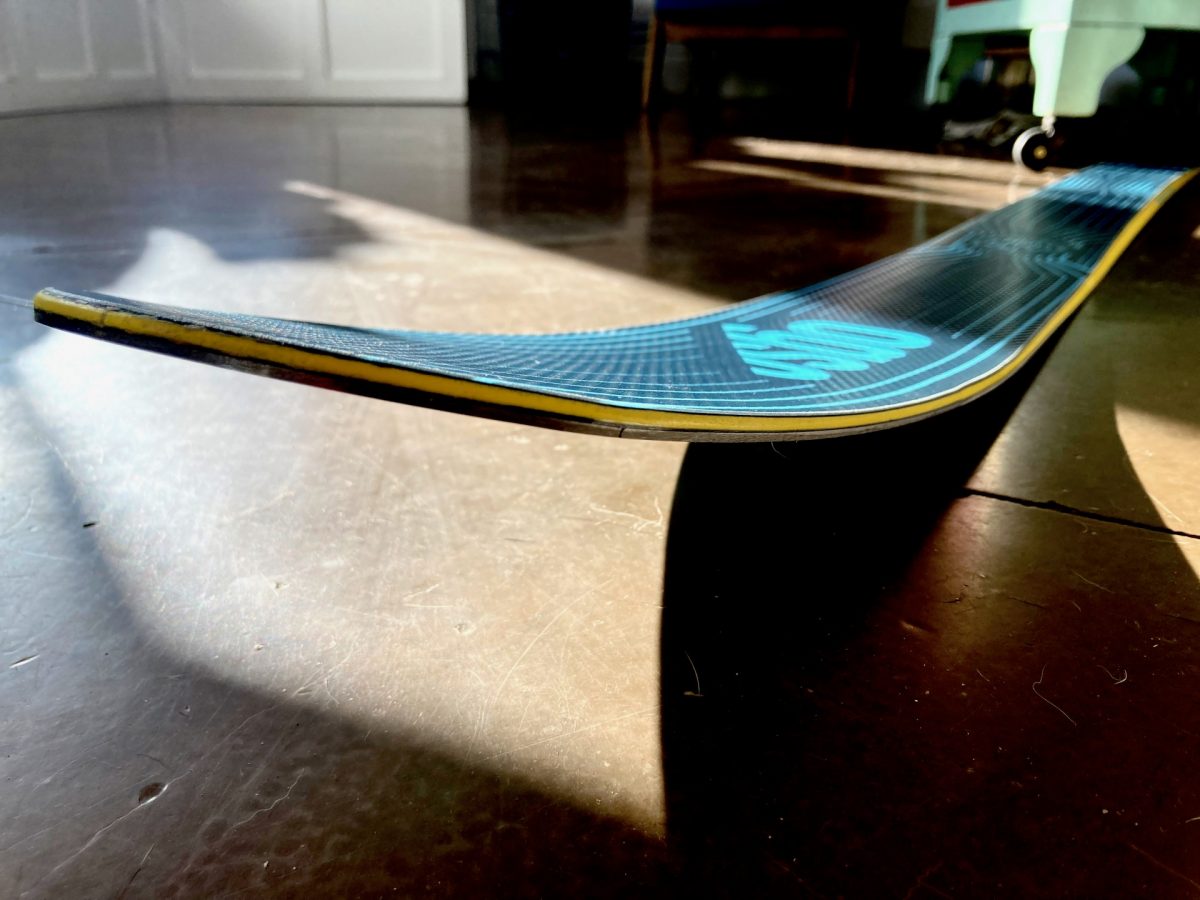
Great lighting can do wonders: here, the amount of tip rocker on the OGSO Schwarztor 100 SR UL speaks for itself.
Final Thoughts on the Schwarztor 100 SR UL
When I first received these skis, I had low expectations – I figured I’d ski them for a few weeks, write the review, and move on to something more “my style” (flat tails, less rocker, etc.). Then, suddenly, it was May 1, and I practically hadn’t skied anything else all spring. I was pleasantly surprised at how much I enjoyed the Schwarztors- given my preconceptions about their shape and my initial comparisons with the DPS 112RP, that has never really appealed to me. The longer radius, camber, and stiffness underfoot combined to make a stable, energetic, and downright fun ski that was a fun change of pace from my usual preference toward a stronger and more “locked in” tail. I’m not ready to recommend the Schwarztor as an uber versatile, one ski quiver; but for someone looking for something a little different in the ~105mm width range, they are definitely worth a look.
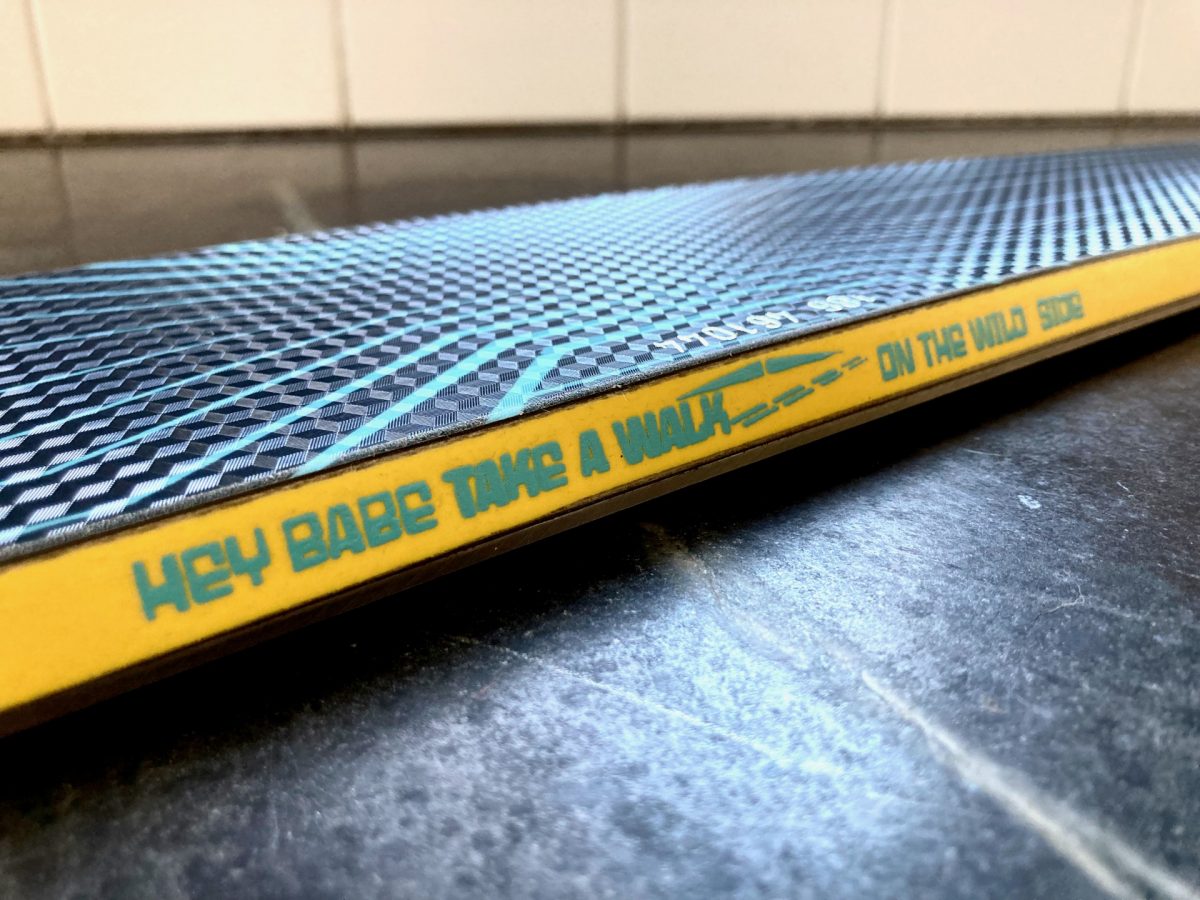
You know how it goes: “Holly came from Miami, F.L.A. … Hitch-hiked her way across the U.S.A. …Doo do doo do doo do do doo…” — Thank You Lou Reed
Gavin is a mountain guide and gear fanatic based in Jackson, WY. His endless pursuit of gear perfection led to starting a pack company, Apocalypse Equipment in 2019. He has a degree in Nordic skiing and mechanical engineering from the University of New Hampshire and worked as a ski shop tech prior to getting his dream job as a WildSnow contributor.

